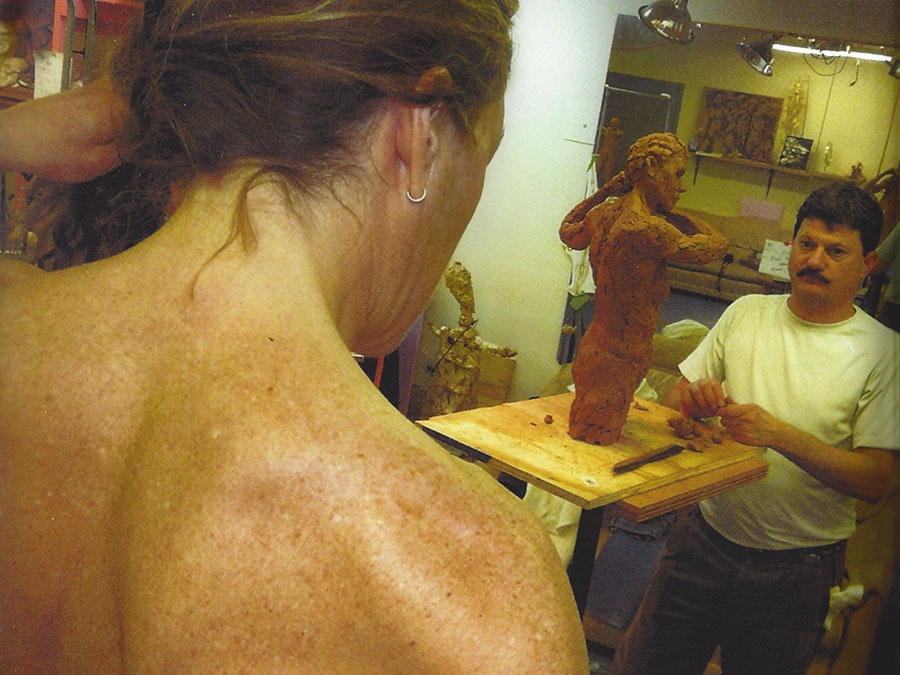Sculpture Process
How my sculptures are created, from start to finish
Initial inspiration
My initial inspiration for a sculpture begins with a pose or an image that strikes me as graceful, thought provoking and spiritual enough to suggest a message.
Yoga poses frequently exhibit the tension between strength and balance, while emoting gracefulness and harmony. Other images or poses show intention, purposefulness, and both inner and outward beauty.
I strive to capture the message of the pose through facial expression, body movement, and balance of the model.
The sculpting process
When I rough out the approach and scale to a sculpture, I construct an armature out of narrow gauge plumbing pipes affixed to a wooden base, and armature wire to create the pose. It is important to carefully consider the size of the finished piece when constructing the armature.
The sculpture begins with adding a specialized modelling clay to the armature.
I prefer to use an oil-impregnated clay that has sufficient strength characteristics to retain its application without falling off the armature. I currently use a clay product produced by the Chavant Company.
My process is generally a layering of clay to build up the surfaces, thereby creating both volume and texture (frequently called hand-building).
Many pounds of clay may be used to produce the desired look, and, when finished, the resulting sculpture can become quite heavy.
My intent is to create surface textures that impart motion, dynamic energy, and the overall mood of the sculpture.
What am I trying to impart? Is it strength of character, muscularity, gracefulness, tension, balance, or all of these.
My goal is to impart a message and expect that the viewer will be engaged enough to ponder the soul of the sculpture.
Casting materials and surface finishes
When a work is finished, the sculpture is brought to a casting foundry to construct a mold, usually made of rubber.
When cured, the mold is opened and the clay is returned to me for reuse. The mold itself is then used to produce multiple casts of the work, either in resin or bronze.
Resin casts are light weight, and designed for and durable in an indoor setting. The resin cast is painted with acrylics in a variety of colors to match bronze, stone, wood or terracotta. Lead times for resin casts are typically 4 weeks, but occasionally sooner.
Bronze casts are quite heavy and very durable in either an indoor or outdoor setting, with lead times of 8-12 weeks. Due to materials costs, bronze casts are typically 2.5 time the cost for resin casts.
In either form, casts of the original allow the sculpture to endure in many copies.



